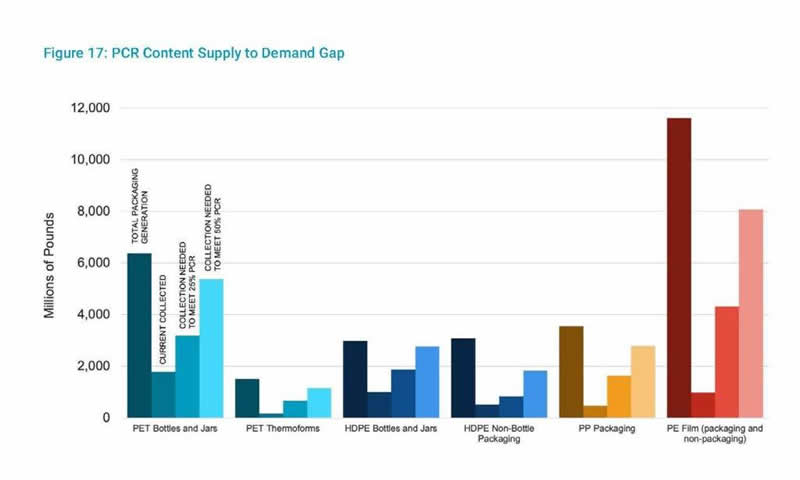Recommendations for Recycled Content: Requirements for Plastic Goods and Packaging
The latest report from the Ocean Conservancy, Recommendations for Recycled Content: Requirements for Plastic Goods and Packaging, makes the case for recycled content standards at the national level for plastic products and packaging within the US. The report, prepared through collaboration with RRS, reviews the current plastic recycling landscape and evaluates several policy scenarios and their implications.
 “Today’s state-level policies have seen success at driving markets for PCR, however the lack of consistency across the nation adds complexity and difficulty for compliance,” said Anne Johnson, vice president of global corporate sustainability at RRS. “Federal-level policies – both supply and demand-side policies – could provide harmonized national implications creating more efficiency, leveling the playing field, and developing a circular economy that keeps materials in use longer.”
“Today’s state-level policies have seen success at driving markets for PCR, however the lack of consistency across the nation adds complexity and difficulty for compliance,” said Anne Johnson, vice president of global corporate sustainability at RRS. “Federal-level policies – both supply and demand-side policies – could provide harmonized national implications creating more efficiency, leveling the playing field, and developing a circular economy that keeps materials in use longer.”
The study highlights various demand-side policies that require minimum post-consumer recycled content levels (as opposed to post-industrial or pre-consumer content) thereby creating a demand for recycled materials. These demand-side policies need to be coupled with supply-side policies like extended producer responsibility (EPR) and beverage container deposits that increase the collection and processing of recyclables. The study confirms that the combination of demand-side and supply-side policies would help to increase recycled content while reducing emissions associated with material production and resource extraction.
Recommendations for minimum post-consumer recycled content are provided for plastic film and durable products, and packaging applications. There are two sets of recommendations for packaging applications – one that assumes state-level supply-side policy in a number of states and some technical innovation, and a more aggressive one that assumes national-level supply-side policy and accelerated innovation. In both scenarios, the percentage of recycled content would increase over time to ensure robust support for materials moving through the system, and to drive technological and market innovation.
The study is available for free download on the Ocean Conservancy website: Recommendations for Recycled Content
The post New Report: Recommendations for Recycled Content appeared first on Recycle.com.